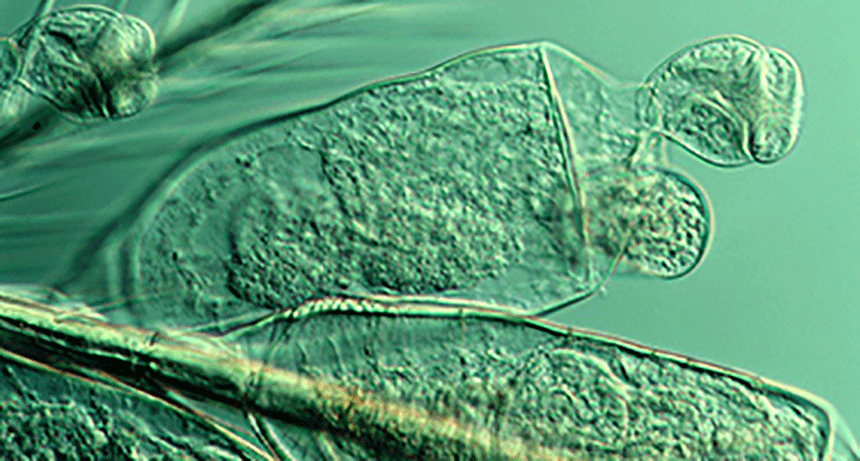Questions for ‘Living Mysteries: This complex beast lurks on lobster whiskers’

Smaller than a grain of salt, Symbion pandora lives on the mouth whiskers of lobsters. It lives on the leftover crumbs of its host’s meal.
Reinhardt Møbjerg Kristensen
Come explore with us!

Smaller than a grain of salt, Symbion pandora lives on the mouth whiskers of lobsters. It lives on the leftover crumbs of its host’s meal.
Reinhardt Møbjerg Kristensen
To accompany feature “Living Mysteries: This complex beast lurks on lobster whiskers”
1. Imagine you wanted to discover a brand-new species of animal. Where would you search for it, and why?
2. What is the smallest animal that you can think of? How many cells do you think it might have?
1. Where does Symbion pandora live?
2. Why is it advantageous for it to live there?
3. What was unusual about Peter Funch and Reinhardt Møbjerg Kristensen’s discovery of S. pandora as a new species?
4. What is unusual about how pandoras reproduce?
5. What are two differences between male and female pandora babies?
6. According to Ricardo Cardoso Neves, why does the male pandora lose three-fourths of its cells during its lifetime?
7. What are two advantages for the male pandora to live in a pouch attached to a big pandora?
8. How does Peter Funch think that pandoras mate?
9. According to Reinhardt Møbjerg Kristensen, why is a small animal not necessarily a simple animal?
10. Why is it important for pandoras to create a life stage that can swim?
1. The pandora has evolved to live on a surface that is shed at least once each year. Imagine that you had to move from your home and start over every year. What skills or traits would help you build a new home and community?
2. Animals evolve in response to their environments to have the best chance of surviving and reproducing. What are two situations where it might be an advantage for an animal to get larger? What are two situations where it might be an advantage to get smaller?
Register to access:
An error occurred. Please try again.
Already Registered? Enter your e-mail address above.